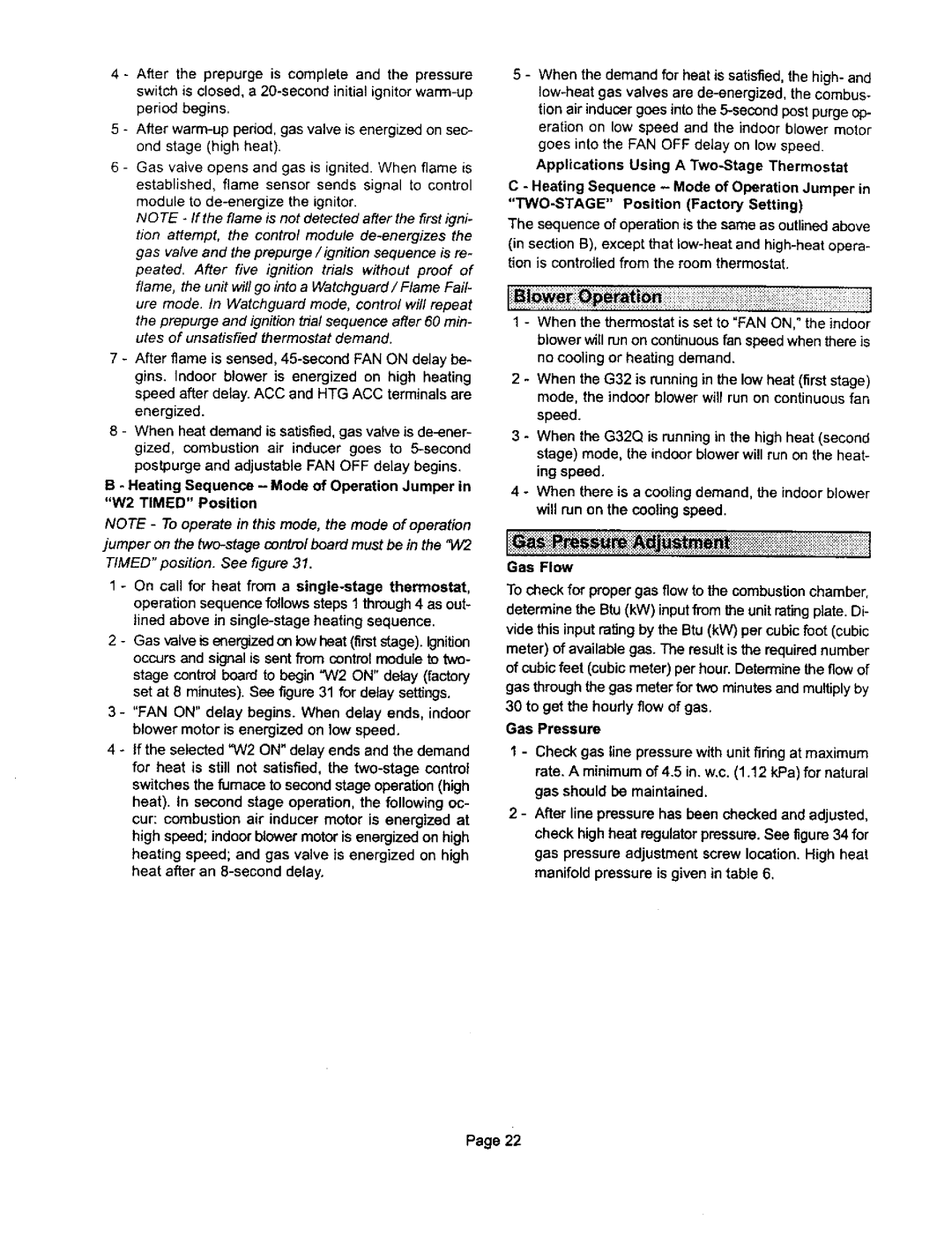
4- After the prepurge is complete and the pressure switch is closed, a
5 - After
6 - Gas valve opens and gas is ignited. When flame is established, flame sensor sends signal to control module to
NOTE - If the flame is not detected after the first igni- tion attempt, the control module
7 - After flame is sensed,
gins. Indoor blower is energized on high heating speed after delay. ACC and HTG ACC terminals are energized.
8 - When heat demand is satisfied, gas valve is
B - Heating Sequence - Mode of Operation Jumper in "W2 TIMED" Position
NOTE - To operate in this mode, the mode of operation jumper on the
1 - On call for heat from a
operation sequence followssteps 1 through4 as out-
lined above in
2- Gas valveisenergizedon low heat(firststage). Ignition occursand signal is sentfrom control moduleto two-
stage controlboard to begin "W2 ON" delay (factory set at 8 minutes).See figure 31 for delay settings.
3 - "FAN ON" delay begins. When delay ends, indoor blower motor is energized on low speed.
4- If the selected "W2 ON" delay ends and the demand
for heat is still not satisfied, the
heating speed; and gas valve is energized on high heat after an
5 - When the demand for heat is satisfied, the high- and
Applications Using A
C - Heating Sequence - Mode of Operation Jumper in
The sequence of operation is the same as outlined above
(in section B), except that
1 - When the thermostat is set to "FAN ON," the indoor blower will run on continuous fan speed when there is no cooling or heating demand.
2 - When the G32 is running in the low heat (first stage) mode, the indoor blower wilt run on continuous fan
speed.
3 - When the G32Q is running in the high heat (second stage) mode, the indoor blower will run on the heat- ing speed.
4 - When there is a cooling demand, the indoor blower will run on the cooling speed.
Gas Flow
To checkfor propergas flowto the combustionchamber. determine the Btu (kW) inputfrom theunitratingplate.Di- vide this inputrating by the Btu (kW) per cubicfoot (cubic meter) of availablegas. The resultis the requirednumber of cubicfeet (cubicmeter) per hour.Determinethe flow of gas throughthe gas meterfor two minutesand multiplyby
30to get the houdy flow of gas. Gas Pressure
1 - Check gas line pressurewith unitfiringat maximum rate. A minimumof 4.5 in. w.c. (1.12 kPa) for natural gas should be maintained.
2- After line pressure has been checked and adjusted, check high heat regulatorpressure.See figure34 for gas pressure adjustment screw location. High heat manifoldpressure is given in table 6.
Page 22
